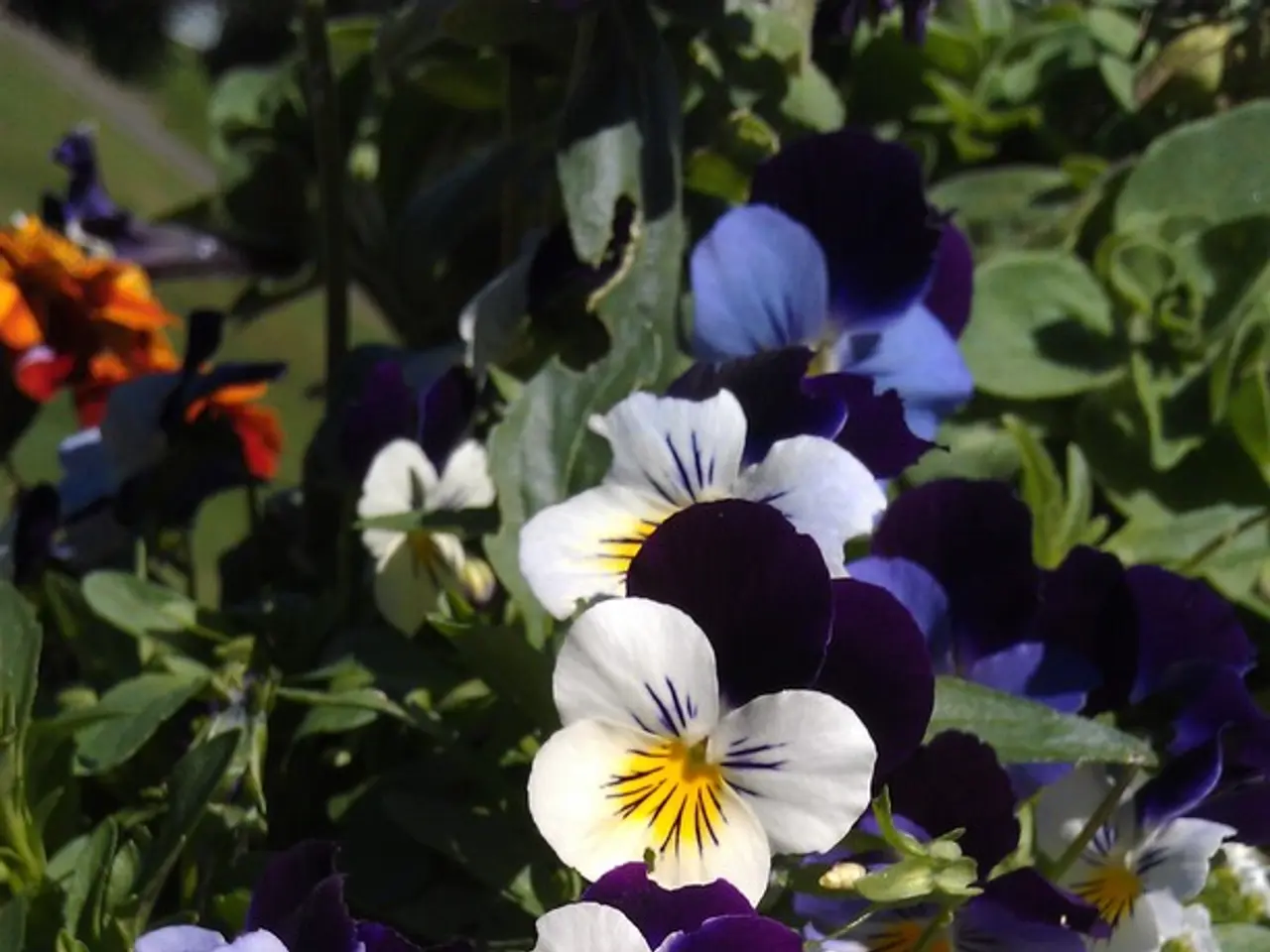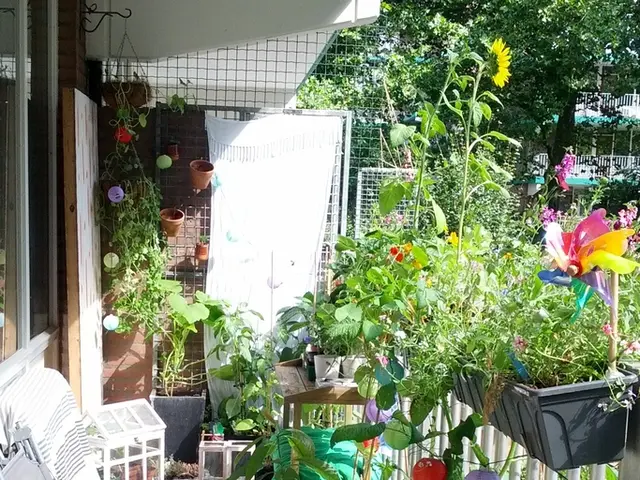Explore 12 Easy-to-Cultivate Local Blossoms for Your Floral Oasis
Supporting Pollinators with Native Wildflowers: A Guide for Gardeners
In the ongoing effort to create thriving ecosystems and support local pollinators, planting native wildflowers is a simple yet effective solution. These easy-to-grow, pollinator-friendly flowers are suitable for various USDA zones and offer numerous benefits for both gardeners and the environment.
Black-eyed Susan (Rudbeckia hirta)
A fast-growing biennial or short-lived perennial, the Black-eyed Susan blooms from midsummer to midfall, attracting bees and butterflies. This versatile plant self-sows readily and grows 2-4 feet tall, making it an ideal choice for a broad range of zones (3-5).
Purple Coneflower (Echinacea purpurea)
Known for its reliability and long-lasting flowers, the Purple Coneflower supports native bees and butterflies. Thriving in USDA zones 4-9 and above, this hardy plant is a must-have for any pollinator-friendly garden.
Lupine (Lupinus spp.)
Featuring showy pea-like blossoms in pink, purple, blue, or white, Lupine prefers full sun to part shade with good drainage and grows well in zones 4-8. This plant is a favourite among bees and other pollinators.
Wild Columbine (Aquilegia canadensis)
Preferring moist, organically rich soil in part shade, Wild Columbine thrives in zones 3-8. Its distinctive flowers attract hummingbirds, bees, and butterflies, making it an excellent addition to any pollinator garden.
Swamp Milkweed (Asclepias incarnata)
Supporting monarch butterflies and other pollinators, Swamp Milkweed is suitable for wetter sites. This versatile plant adds a splash of pink to your garden and is an essential addition for those looking to create a pollinator-friendly space.
Bee Balm (Monarda fistulosa)
A native plant with long-lasting flowers and a minty scent, Bee Balm is excellent for native bees. This hardy plant is suitable for zone 4 and up, making it a great choice for gardeners in colder regions.
California Poppy (Eschscholzia californica)
Bright, easy to grow, and attractive to pollinators, California Poppy is suitable for warmer zones but adaptable. This cheerful flower is a welcome addition to any pollinator garden.
Gardening Success with Wildflowers
For the best results, gardeners should consider adding water sources like shallow dishes with pebbles for pollinators, leaving seed heads and stems for overwintering insects, and planting a mix of tall, medium, and low-growing flowers to provide shelter and structure.
These wildflowers are adapted to their native regions, making them generally low-maintenance and beneficial for local ecosystems by supporting pollinator food webs, boosting biodiversity, and providing natural pest control support.
Serena Manickam
Serena Manickam, a freelance editor and writer and sustainable market gardener in rural Virginia, emphasises the importance of native wildflowers for supporting local pollinators. She runs Fairydiddle Farm, a small market garden where she grows no-spray produce and herbs to sell at a local farmer's market.
Image Credits
- Plains Coreopsis image credit from Backyard Garden Lover.
- White Turtlehead image credit from Depositphotos.
- Compass plant image credit from Depositphotos.
- Butterfly Weed image credit from Depositphotos.
- Garden coreopsis image credit not available.
- Plains Coreopsis image credit from Depositphotos.
- Large-flowered beardtongle image credit from Depositphotos.
- White Turtlehead image credit from Depositphotos.
- Incorporating organic herbs and veggies from Serena Manickam's Fairydiddle Farm in your home-and-garden lifestyle enhances the pollinator-friendly garden by providing additional food sources for bees and butterflies.
- Tucked amongst the colorful wildflowers, gardeners can add unique decor elements, such as gardening tools or handcrafted birdhouses, to create an engaging home-and-garden atmosphere that caters to both humans and nature.
- For gardeners interested in cultivating stunning flowering plants, considering seeds of native wildflowers like Black-eyed Susan, Purple Coneflower, Lupine, Wild Columbine, Swamp Milkweed, Bee Balm, and California Poppy will contribute to a flourishing organic lifestyle and a thriving pollinator habitat.
- In the process of gardening, ensuring that soil composition is nutrient-rich and suits the specific needs of each chosen wildflower (such as Lupine's preference for well-drained soil) ensures a healthy ecosystem and successful planting.
- To maximize the garden's potential for attracting pollinators, consider strategic planting practices, such as combining tall, medium, and low-growing wildflowers that provide shelter and structure for bees, butterflies, and other beneficial insects.
- In addition to their many benefits for the ecosystem, native wildflowers contribute to the beauty and unique character of any pollinator-friendly garden, infusing it with a vibrant, organic charm that embodies a sustainable and harmonious life.




